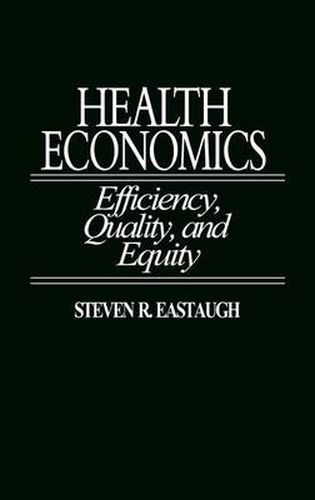Readings Newsletter
Become a Readings Member to make your shopping experience even easier.
Sign in or sign up for free!
You’re not far away from qualifying for FREE standard shipping within Australia
You’ve qualified for FREE standard shipping within Australia
The cart is loading…






This is a study of the present status and future direction of health care economics and its far-reaching ramifications. Health Economics provides exhaustive analyses of such major issues as cost-benefit, cost-effectiveness, quality enhancement, and technology assessment. Part 1 presents a basic overview of cost analysis, production functions, and provider cost behaviour. Part 2 considers economic models of physicians and hospital behaviour, and recent changes in methods for paying physicians. Part 3 focuses on employee cost sharing, HMOs, gatekeepers to contain utilization, and the use of case managers in long-term care. Part 4 looks at equity, social welfare, and the unique problems of urban medical centres. Part 5 focuses on consumer information, quality measurement, and health manpower policies for nonphysician providers. Cost-effectiveness and cost-benefit analysis is reviewed in part 6. The last part summarizes major future policy options and suggests a number of mixed strategies, including capitation. In short, Health economics aims to provide policy makers, health care providers, and students with the analytical tools needed to effectively balance efficiency and quality.
$9.00 standard shipping within Australia
FREE standard shipping within Australia for orders over $100.00
Express & International shipping calculated at checkout
This is a study of the present status and future direction of health care economics and its far-reaching ramifications. Health Economics provides exhaustive analyses of such major issues as cost-benefit, cost-effectiveness, quality enhancement, and technology assessment. Part 1 presents a basic overview of cost analysis, production functions, and provider cost behaviour. Part 2 considers economic models of physicians and hospital behaviour, and recent changes in methods for paying physicians. Part 3 focuses on employee cost sharing, HMOs, gatekeepers to contain utilization, and the use of case managers in long-term care. Part 4 looks at equity, social welfare, and the unique problems of urban medical centres. Part 5 focuses on consumer information, quality measurement, and health manpower policies for nonphysician providers. Cost-effectiveness and cost-benefit analysis is reviewed in part 6. The last part summarizes major future policy options and suggests a number of mixed strategies, including capitation. In short, Health economics aims to provide policy makers, health care providers, and students with the analytical tools needed to effectively balance efficiency and quality.